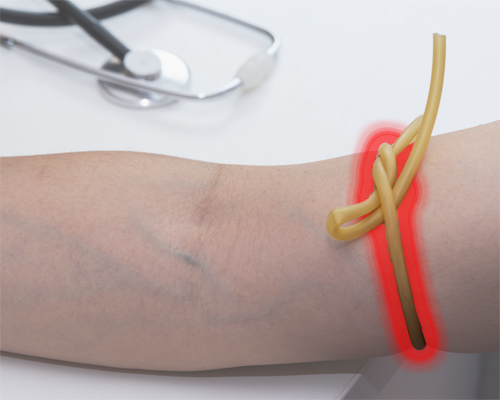A Smart, Force-Sensitive Tool to Teach Proper Tourniquet Wrapping Technique
 Whether for treating an injured individual, or as something simply done ahead of drawing blood from a patient for lab analysis, tourniquet wrapping technique is an important skill used across a wide range of medical professions. It requires keeping a safe a balance between applying enough force to an area to restrict blood flow, but not too much force that can further injure the individual.
Whether for treating an injured individual, or as something simply done ahead of drawing blood from a patient for lab analysis, tourniquet wrapping technique is an important skill used across a wide range of medical professions. It requires keeping a safe a balance between applying enough force to an area to restrict blood flow, but not too much force that can further injure the individual.
As we’ve mentioned in other blog posts, even with years of training, there can always be some variation in how medical personnel physically handle their patients. Smart, force-sensitive medical devices can become useful tools to quantify force feedback not just in how they manually touch their patients, but also in how they wrap tourniquets.
Recently, a medical device manufacturer developed a new training device to help instruct medical personnel in proper tourniquet application. The unit design resembles the shape and contour of a human limb, and includes embedded FlexiForce™ touch sensors as the components to gauge the amount of force the trainee applies while tying the tourniquet.
The force feedback can be displayed through a digital counter, dial, or some other output method that lets the individual know whether to apply more or less force to the patient. The unit can also be programmed with different force threshold limitations; for instance, a healthy adult may be able to endure a tighter tourniquet versus an elderly individual or infant.
Especially in emergency situations, medical professionals can easily overlook safe tourniquet application and technique. This tourniquet-training device is a smart method for medical personnel to hone their skills before entering the field.
Interested in learning more about force-sensitive devices that help standardize how physicians and therapists handle their patients? Check out this free eBook below.

